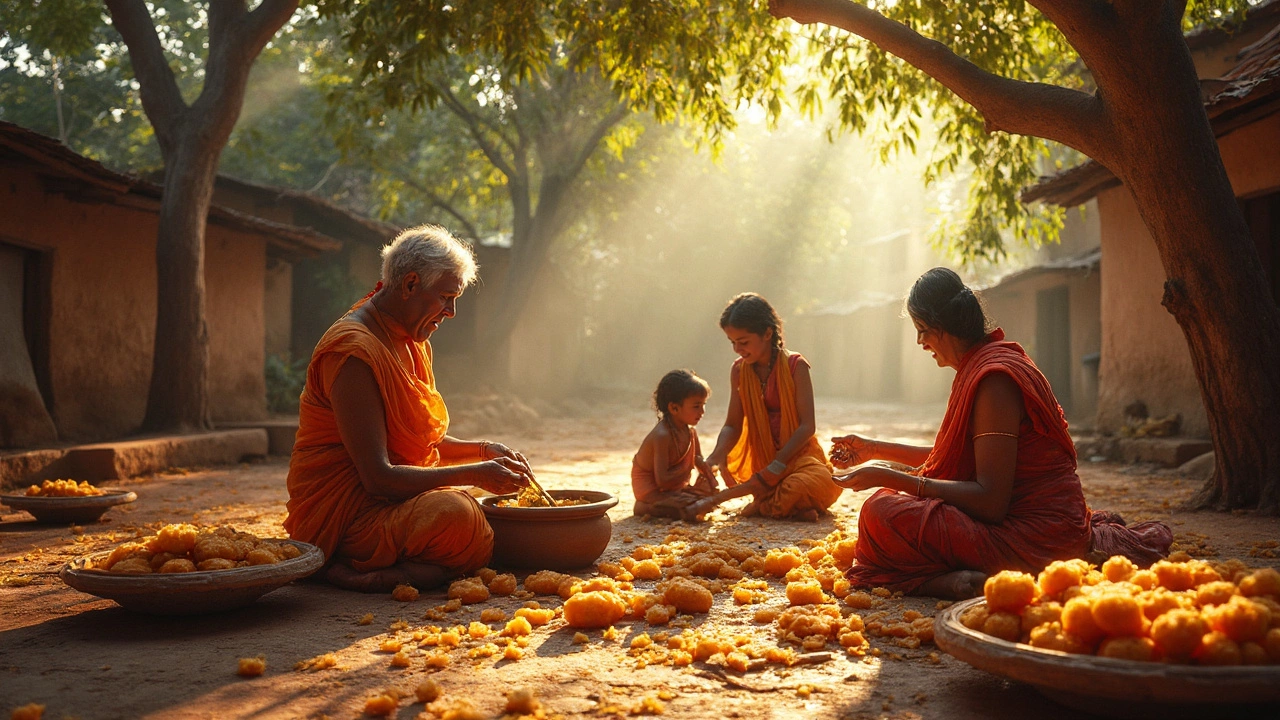Oldest Indian Candy: The Sweet Story Behind India’s First Treat
Ever wondered what the very first Indian candy looked like? It wasn’t a chocolate bar or a gummy bear—it was a simple, spice‑infused sweet made from jaggery, sesame, and rice flour. This ancient candy dates back to the Vedic era, when people used what they had locally to create a quick energy boost for festivals and travel.
Back then, jaggery (unrefined cane sugar) was the main sweetener because refined sugar didn’t exist. Mixed with toasted sesame seeds and a pinch of cardamom, the mixture was pressed into small, bite‑size discs. The result was a crunchy, slightly caramelized treat that could last for weeks without spoiling.
How It Was Made: Simple Steps from the Past
If you want to try this historic candy at home, you only need three ingredients: jaggery, sesame seeds, and a little rice flour. First, melt the jaggery in a pan with a splash of water until it turns liquid. Then toss in roasted sesame seeds and stir quickly. Finally, sprinkle rice flour to bind everything, pour the mixture onto a greased tray, and let it cool before cutting into squares.
The whole process takes under half an hour, and the result is a nostalgic snack that tastes just like the one ancient traders carried on their backs. You can also add a dash of fennel powder for extra flavor or swap rice flour with almond flour for a nutty twist.
Why This Candy Still Matters Today
Beyond its tasty crunch, the oldest Indian candy tells a story of resourcefulness. In a time without refrigeration, jaggery’s low moisture content kept the treat safe for long journeys. It also played a role in religious rituals—offering it to deities during harvest festivals symbolized gratitude and prosperity.
Modern nutritionists appreciate this candy because it’s free from refined sugars and artificial additives. The sesame seeds add healthy fats and protein, while the jaggery provides iron and minerals. Of course, enjoy it in moderation; it’s still a sweet treat.
Today, you’ll find variations of this ancient candy in street markets across South India, especially during Pongal and Diwali. Vendors often call it “til‑ladoo” or “gajak,” each name reflecting a regional spin on the original recipe.
Want to explore more about ancient Indian sweets? Check out our article on the origins of India’s oldest mithai— it dives deeper into the cultural backdrop and shares more recipes you can try at home.
So next time you reach for a candy bar, remember that India’s oldest candy is a simple, wholesome bite that’s survived centuries. Give it a try, and you’ll taste a piece of history in every crunch.
Oldest Candy in India: Tracing the Sweet Roots of Indian Sweets
Ever wondered what counts as the oldest candy in India? This article digs into the ancient roots of Indian sweets, spotlighting jaggery-based treats and early sugarcraft. It unearths the story behind legendary sweets, explores why they've survived for centuries, and breaks down how these early candies were made at home. Expect taste, nostalgia, and a few surprising facts about India’s enduring sweet traditions.
